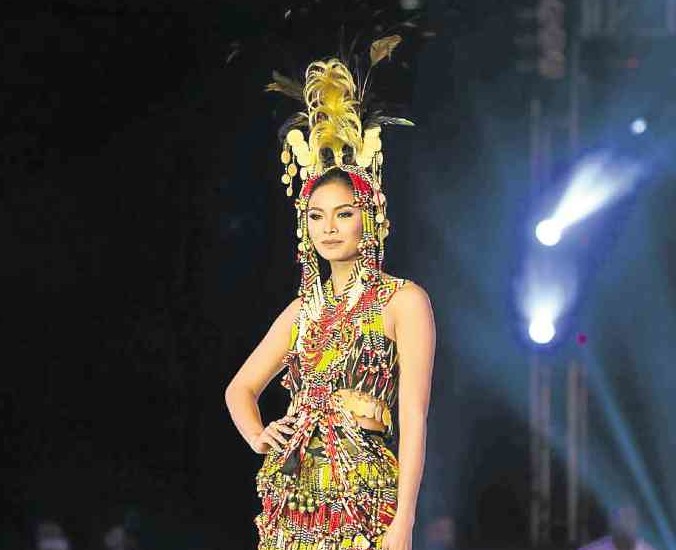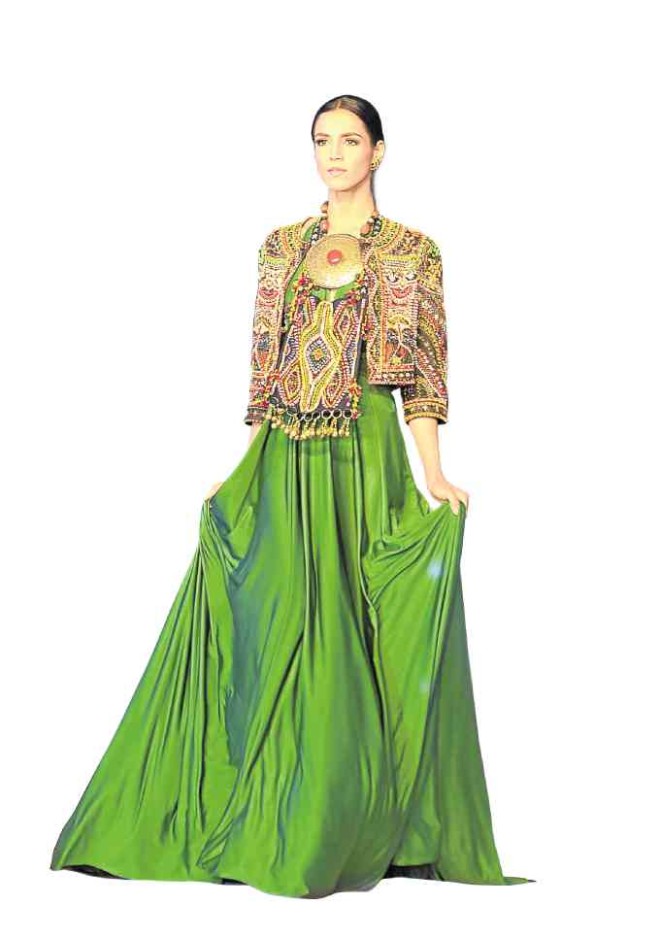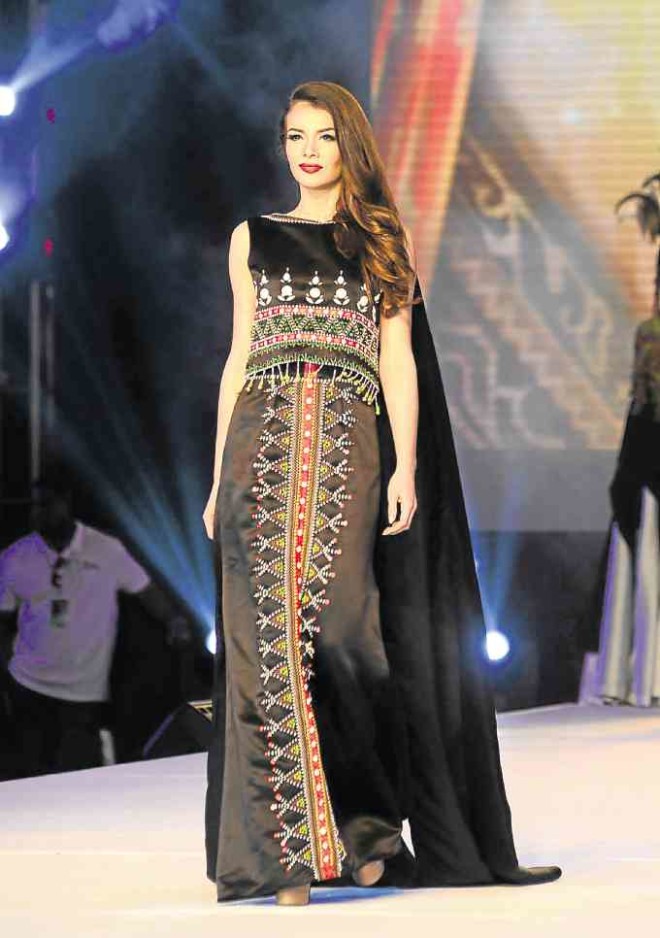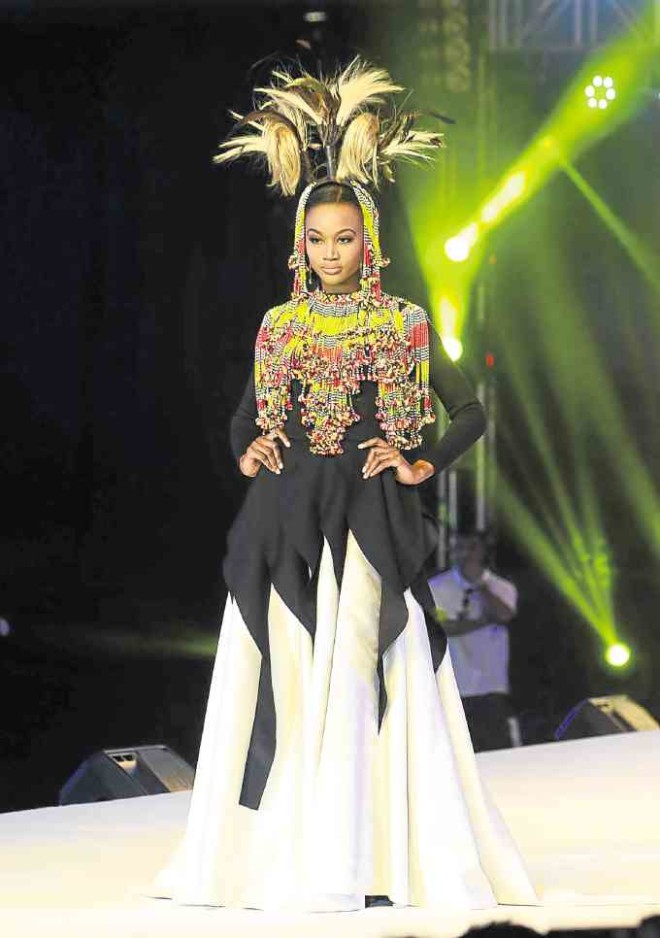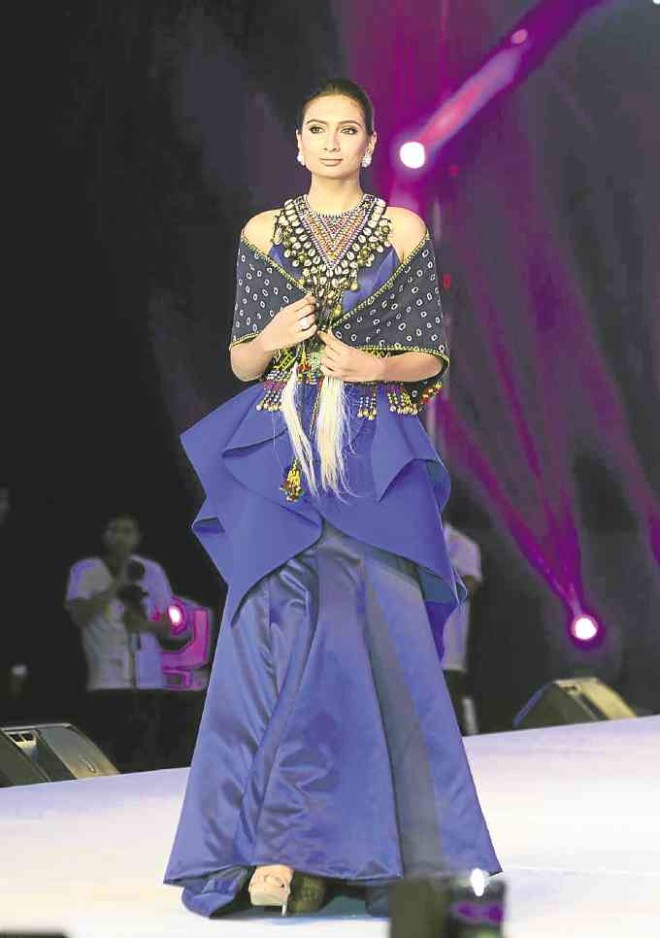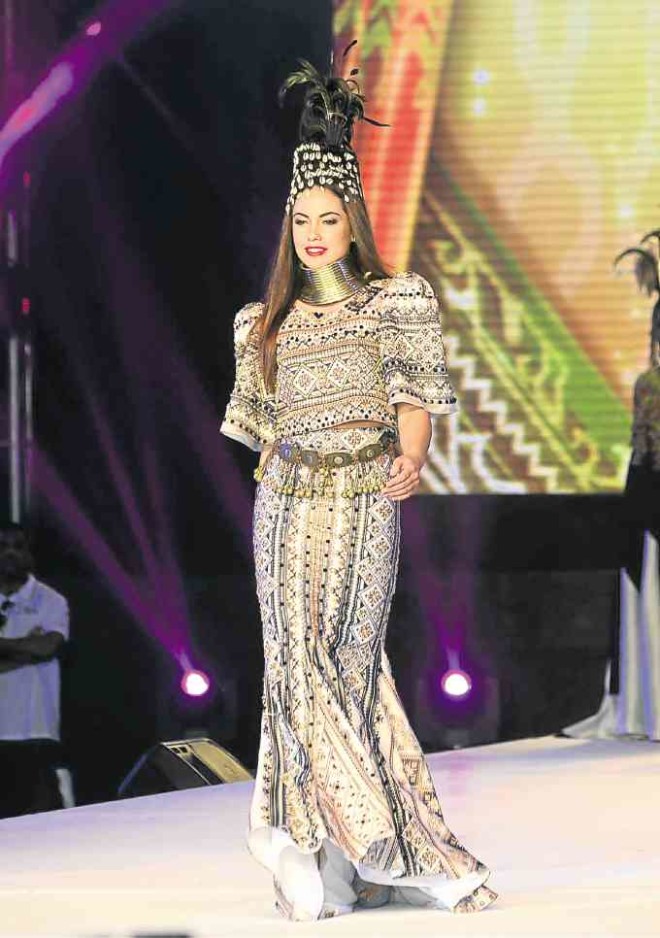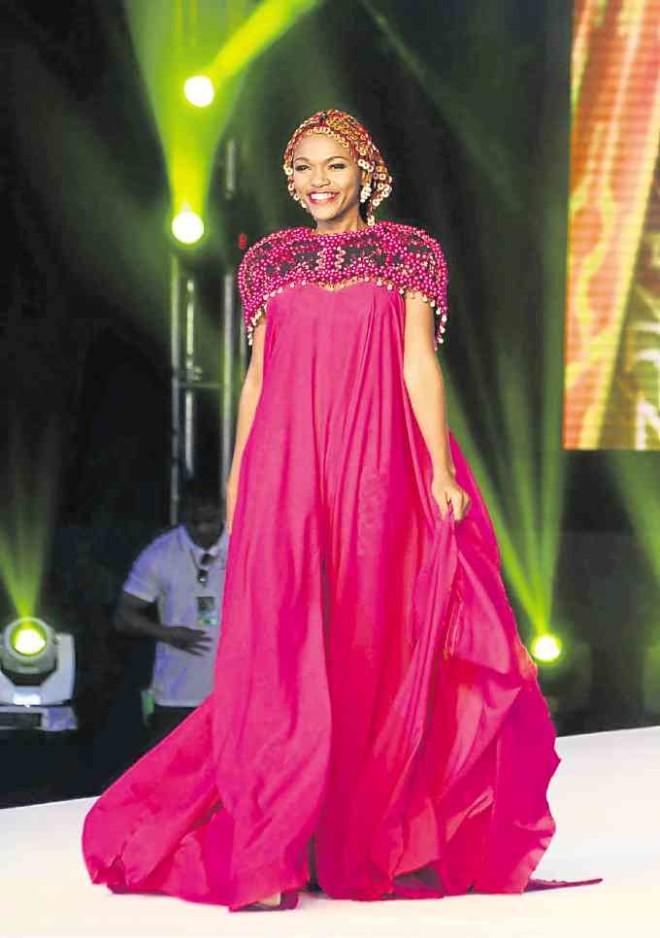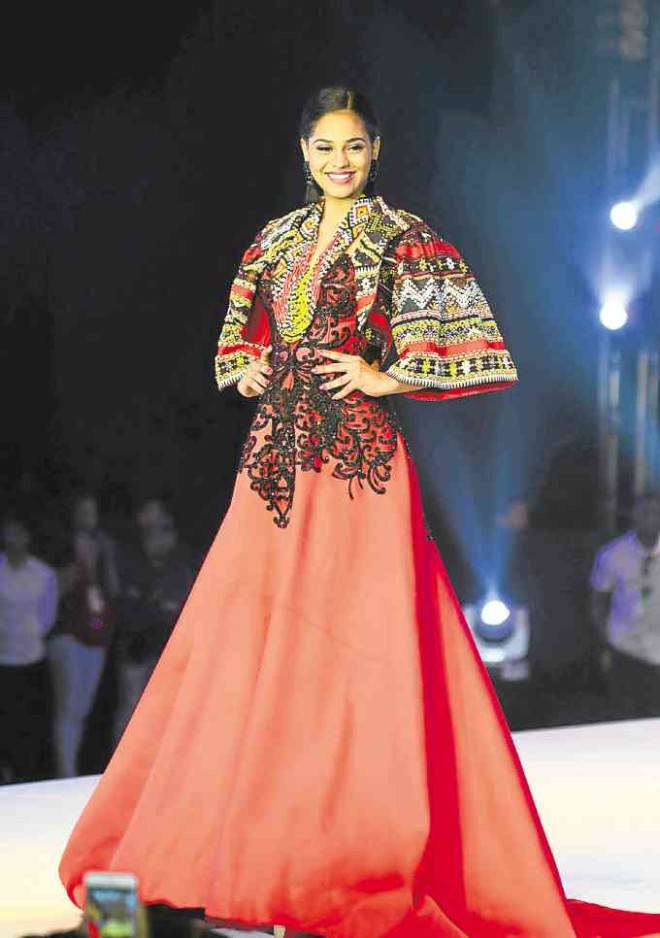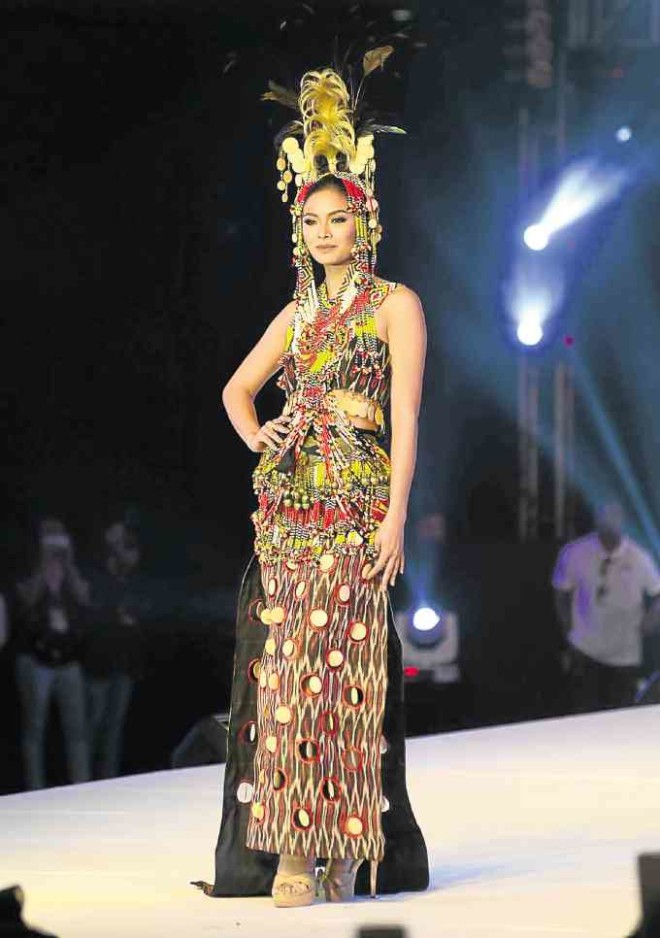Heritage fashion was at the core of the collection presented by 10 Davao designers when they opened the Mindanao Tapestry fashion show in Davao City last Jan. 19. Similarly, a deep understanding of cultural sensibilities informed the evening gowns worn by the Miss Universe candidates as they sashayed down the runway during the Phoenix Fuels-sponsored ancillary event at SMX, SM Lanang Premier.
“You cannot just buy a woven fabric from Mindanao and make a dress out of it and call it Mindanao fashion,” said Aztec Barba, a member of the Davao Fashion and Design Council Foundation Inc. (DFDCFI).
Barba dressed up Miss USA Deshauna Barber in a black-and-white ensemble with generous beading appliques. He said, “These works of art need respect.”
Barba’s group, with some independent designers, were tapped by the Miss Universe Organization (MUO) to dress up some candidates for the show, upon consultation with the Department of Tourism.
Last December, DFDCFI released a statement after having been excluded from the show and upon learning that the event would exclusively showcase the clothes of Manila-based designer Renee Salud. DOT cancelled the event to prevent further controversy, but later decided to push through with it. It was agreed that 10 MUO-handpicked Davao designers would join the show, alongside Salud.
The Mindanao Tapestry show proved that the Davao designers chose a battle worth fighting.
“What we showcased was true Mindanao fashion by Mindanawon designers,” said Emi Englis, head of the fashion design program of the Philippine Women’s College of Davao. Englis also serves as one of the 12 council members of DFDCFI.
“What we showed was a strong assemblage of artisanal ‘heritage fashion,’ the product of a collaboration with the Bagobo women of Lubogan in Toril led by Bae Arlynne Salazar.”
Lubogan is a district in Davao.
It takes a village
“For me, design extends beyond creation. It values respect and relationship. Our relationship with the women artisans was built from the ground up through respect. It didn’t happen overnight. It took us time to understand and learn the interconnectedness of everything in their culture to make possible the ingenious process of creation,” Englis added.
Englis dressed up Miss Paraguay Lourdes Andrea Melgarejo Gonzalez.
“I envisioned a neo-ethnic garb that would make a woman confidently walk the red carpet and celebrate the woman of the universe,” he said. His ensemble featured an emerald green gown in spandex acetate, a fully beaded jacket and bib, and a gong-like neckpiece.
Barba, Englis and the eight designers who joined the Mindanao Tapestry show—Alfonso Boy Guinoo, Dodjie Batu, Egay Ayag, Benjie Panizales, Edgar Buyan, Wilson Limon, Silverio Anglacer and Kenny Ladaga—were delighted that the event was a success.
Limon, 24, the youngest, said he was happy to have been instrumental in showcasing the artistry of the Bagobo Tagabawa tribe.
“I want to grow as a designer by doing more research about the tribes of Mindanao and the country. I want to help preserve waning cultures by incorporating traditional couture techniques in my garments,” he said.
Limon dressed Miss Hungary Veronika Bodizs in a duchess satin piece with various appliques: chalk beads, opaque hems and Swarovski crystals. He said his dress symbolized three important figures in the Bagobo tribe: Manobo (people), Manama (god) and Banwa (world).
Good restart
“After Miss Universe, Davao fashion has a good restart. The Miss Universe event provided a potent charge to encourage us Davao designers to level up our aesthetics by re-educating ourselves about our diverse cultural heritage and how we can possibly transpose age-old tradition into contemporary fashion with a responsible creative license and design sensibility,” said Englis.
“There are motifs, patterns, colors and fabrics intended for specific purposes. As designers, it is our duty to know them and the extent and limits to which we can use them in our designs. Since we are only borrowing inspirations from the traditional community, it is necessary for us not only to study and understand, but also immerse ourselves in the lifestyle that impacts these works of art.”
Englis said designers from the south make their mark distinctly.
“As Mindanawon designers, we must build that identity from where we are coming. If we just strive to be another Dior or Chanel, I don’t think we have a place here. Our challenge is to offer something new and fresh—something people have never seen but has been there since time immemorial. The irony of it is that the ‘new’ stuff is right under our nose,” he said.
Some bumps
The night of beauty and glamor with Mindanao at the center had hurdles.
Red Tie Concepts and Events Inc., the local organizer, had difficulties in mounting the show on time. Paying customers who were dressed to the nines arrived as early as 4 p.m., for the preshow on the foyer. There were only cocktail tables.
The same crowd was made to wait in the SMX hallway for about three hours. The show, which was supposed to start at 6 p.m., began two hours later. The doors opened only at 7:30 p.m.
The printing of tickets also encountered delays. Red Tie finished printing event passes on Jan. 18, 5 p.m.—the day before the event. Paying customers were given only official receipts just so they could enter the venue. Tickets were sold for P10,000, P5,000, P3,000 and P1,200.
The fashion show, which mainly featured Salud’s interpretation of Mindanao fabrics representing six regions, also drew flak for failing to attribute content to correct sources.
In a Jan. 23 privilege speech, the House of Representatives Muslim Affairs chair Sitti Djalia Turabin-Hataman expressed dismay over the incorrect presentation of the Yakan Tennun or the Yakan weave or cloth. It was presented as fabric from Region IX instead of from the Autonomous Region in Muslim Mindanao.
“Our only appeal is for our traditional arts to be recognized as having originated from us. That it is our own distinct contribution. We find it unfair when anything bad and negative and ugly can be easily said of our making, but something beautiful and precious cannot be appropriately attributed to us,” said Turabin-Hataman, who is also the executive director of the National Commission on Muslim Filipinos. —CONTRIBUTED

